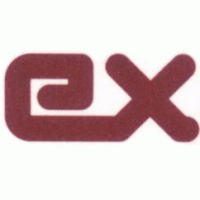1st issue with IP Tools DHCP / PXE Server
"TFTP...." followed by "PXE-E32: TFTP open timeout"
SYMPTOM
When being started, the PXE client comes up with the PXE copyright message and completes the DHCP phase, but then displays:
TFTP....
After a while, the following error message is displayed:
PXE-E32: TFTP open timeout
RESOLUTION
Make sure that TFTP server is running:
click TFTPD button and "Power ON" server (click ON button)
Next issue:
Could not initialize iSCSI device: no such device
Found infos about DHCP Option 17, Root Path:
iSCSI bootOption 17 is used to pass the iSCSI target information to the iSCSI client.
The format of the root path as defined in IETC RFC 4173 is:
"iscsi:"<servername>":"<protocol>":"<port>":"<LUN>":"<targetname>
log file from StarWind Target
5/14 17:37:07.296 96c Srv: Accepted iSCSI connection from 192.168.0.3:1024. (Id = 0xf)
5/14 17:37:07.296 96c C[f], FREE: Event - CONNECTED.
5/14 17:37:07.296 96c C[f], XPT_UP: T3.
5/14 17:37:07.296 b34 C[f], XPT_UP: Login request: ISID 0x400027230000, TSIH 0x0000.
5/14 17:37:07.296 b34 C[f], XPT_UP: Event - LOGIN.
5/14 17:37:07.296 b34 C[f], IN_LOGIN: T4.
5/14 17:37:07.671 b34 Params: <<< String param 'InitiatorName': received 'iqn.2000-09.org.etherboot:UNKNOWN', accepted 'iqn.2000-09.org.etherboot:UNKNOWN'
5/14 17:37:07.671 b34 Params: <<< String param 'TargetName': received 'd530usdt', accepted 'd530usdt'
5/14 17:37:07.671 b34 Params: <<< Enum param 'SessionType': received 'Normal', accepted 'Normal'
5/14 17:37:07.671 b34 Params: <<< Enum param 'AuthMethod': received 'None', accepted 'None'
5/14 17:37:07.671 b34 T[f,1]: Login request: target 'd530usdt' does not exists.
5/14 17:37:07.671 e48 C[f], IN_LOGIN: Event - LOGIN_REJECT.
5/14 17:37:07.671 e48 C[f], FREE: T7.
5/14 17:37:07.671 b34 C[f], FREE: recvData returned 10058
Edited by bilou_gateux, 18 May 2009 - 02:45 PM.

















